the Standard C-5608 is a 20 years old transceiver but widely used by many hams since it is very user friendly compared with modern menu-driven rigs. And it allows modifications and extensions.
I purchased the C5608 via internet for a low price with the goal to extend it for D-Star operation.
After some tests and measurements I successfully did the modifications and the C5608 is now QRV in D-Star. This page describes the modifications in detail. Even after the modification the C5608 is still useable in normal FM mode.
D-Star Modem:
To extend an FM transceiver for D-Star we need a D-Star modem (adapter). Today, 2009, these modems are available:
| kit from www.funkamateur.de | |
| DV-board from Satoshi http://d-star.dyndns.org/rig.html.en | |
| Hot-Spot from Satoshi http://d-star.dyndns.org/rig.html.en |
other boards from several OMs are in development.
I used the kit from funkamateur.de (which is based on a development from Satoshi). But my goal was to use the C5608 also woth other board especially with the hot-spot.
RX Signal:
The received digital D-Star signal must be feed into the D-Star modem without any filtering. We get it directly from the demodulator before any NF processing.
The C5608 has two identical demodulators, one for the 144 MHz and the other for the 430 MHz band. One is on the upper sinde, the other on the lower side. We have to open both sides of the rig.
This is the schematic of the 430 MHz demodulator, the red line shows where to get the digital D-Star signal.
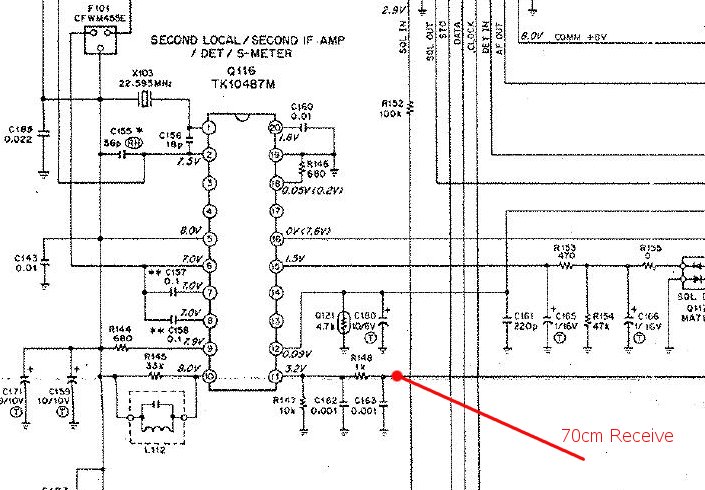
and a picture:
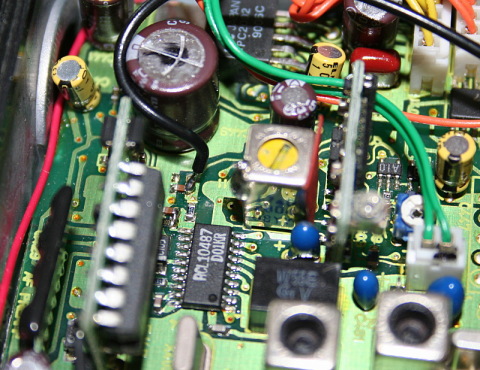
look for the black wire. This is the D-Star signal after the 1 MHz low-pass which eliminates HF components from the signal.
and the schematic of the 144 MHz part::
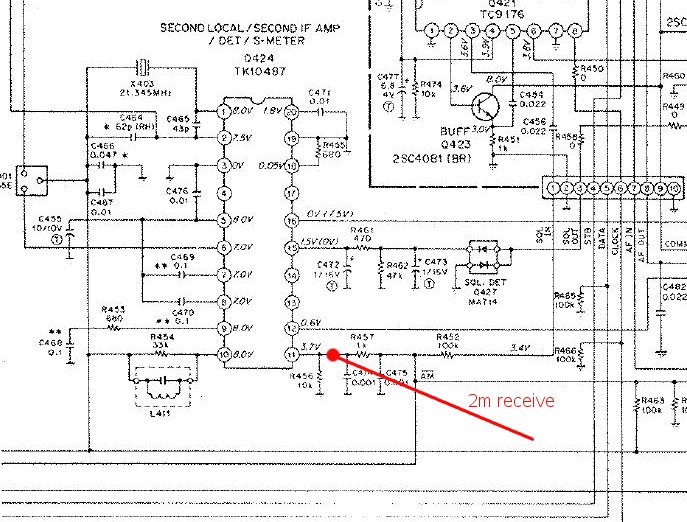
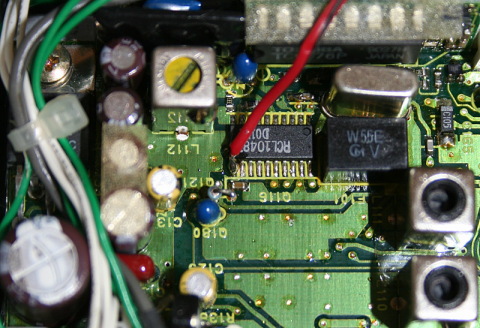
the red wire is connected directly to the demodulator chip since the 1 MHz low pass is on the bottom side of the PCB and not accessible. We will add our own filter in the amplifier:
The demodulator output has a relatively high impedance. Connecting it directly to a D-Star board works fine, but it is not possible to connect i.e. a sound-card. Therefore I added a simple amplifier to get a powerful low impedance signal out of the C5608. This amp consists simply of a LM358 OP.
This circuit diagram shows the amplifier, the 1 MHz filter ans also the wiring of the PTT, mute and modulator lines:
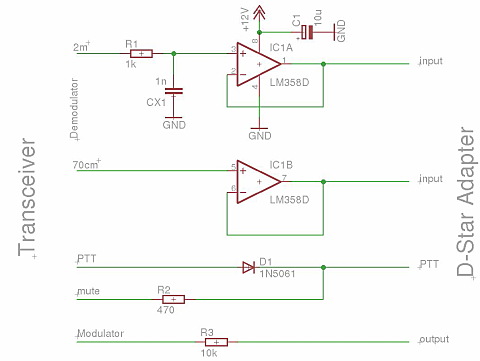
I have put the few components on a tiny PCB as you can see in the following picture:
For the power supply of the LM358 I use the +9V common line of the C5608 which is easily accessible at various pins on the board.

TX Signal:
The digital transmit signal from the D-Star modem must be fed into the C5608 without any filtering. Therefore we put it directly into the modulator.
this is the schematic of the modulator:

The output of the D-Star modem must be fed through a 10k resistor to the wire marked with the red line.
here is a picture how I dit it:
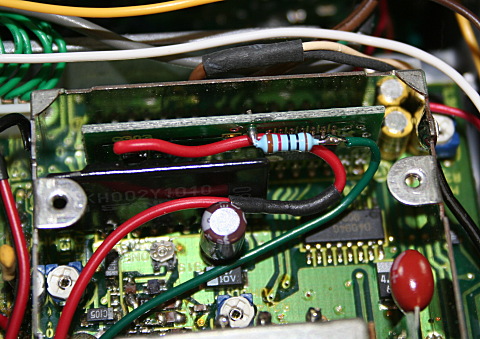
PTT:
The PTT output of the D-Star modem must be connected via an Si-Diode (i.e. 1N4148) to the PTT line of the C5608 marked with the red line below:
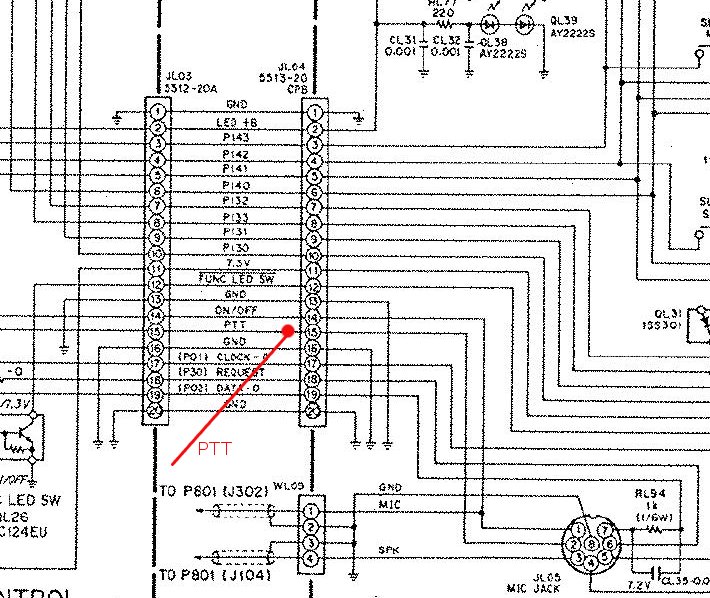
optinally we can mute the C5608's microphone during D-Star transmission. Connect the D-Star modem's PTT output with a 270 to 470 Ohms resistor to the red line shown below:
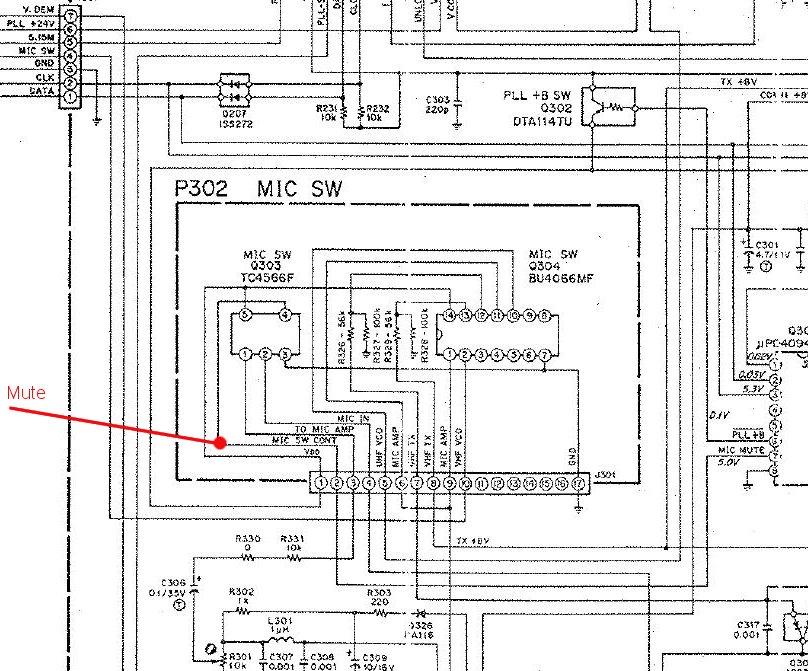
this modification disturbs the cross band repeater mode of the C5608, so you have to decide what you need more.
here is the connection near the front panel:
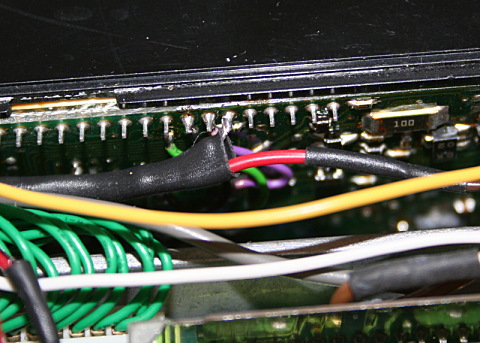
Thats all we need. Check the signals with an oscilloscope and enjoy D-Star operation.
Kurt, DJ0ABR